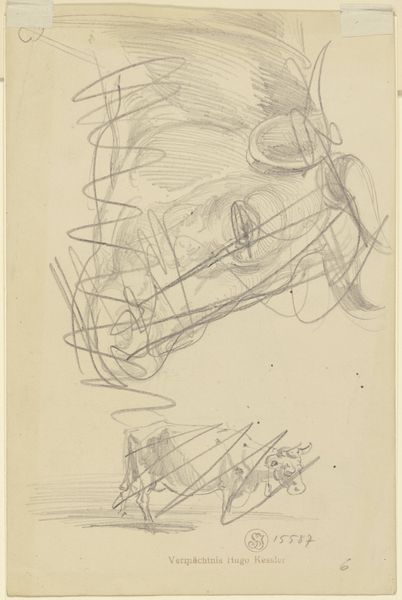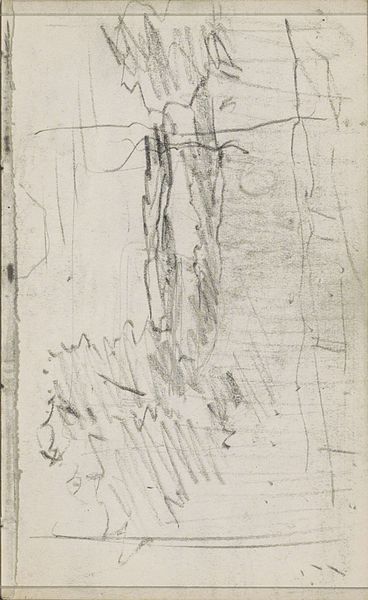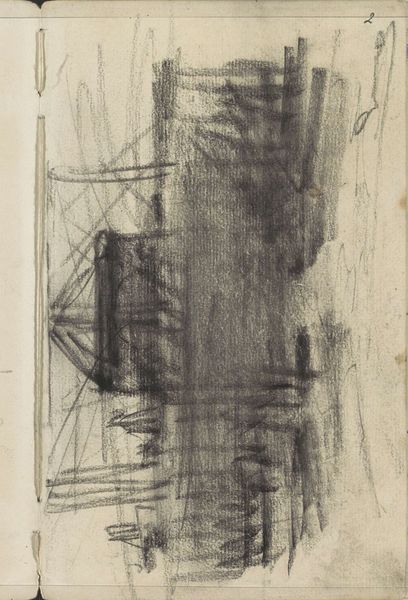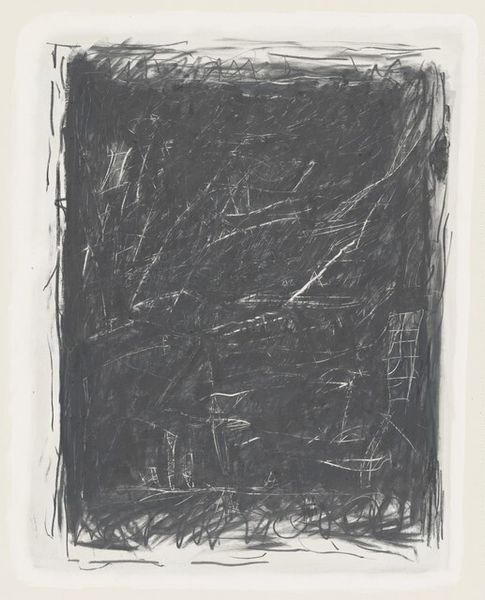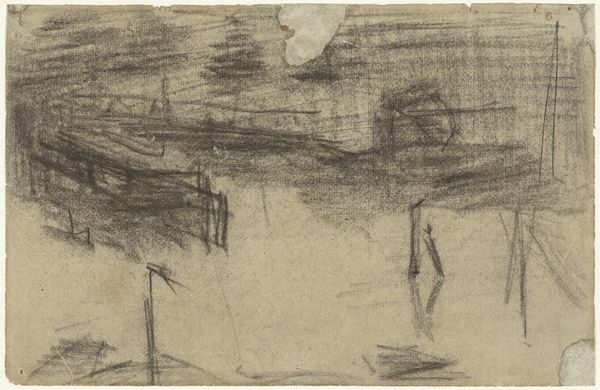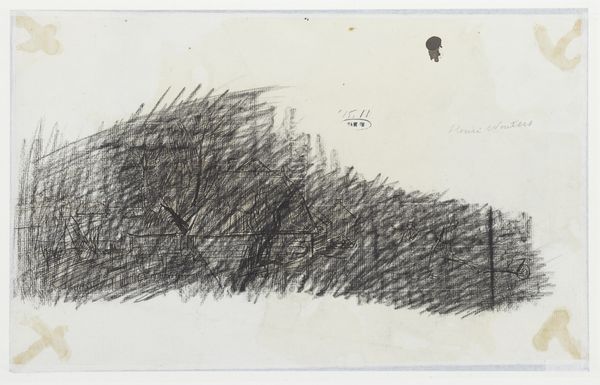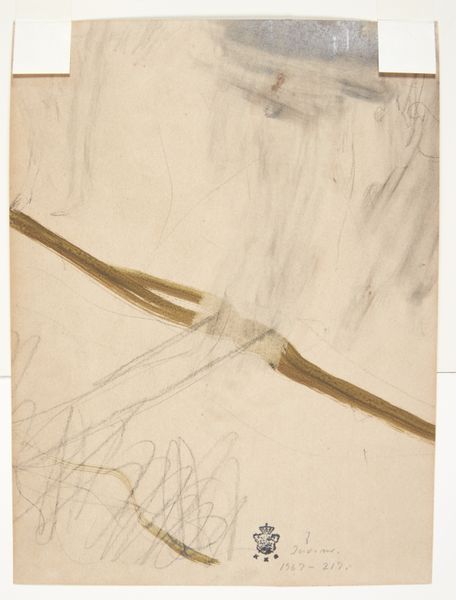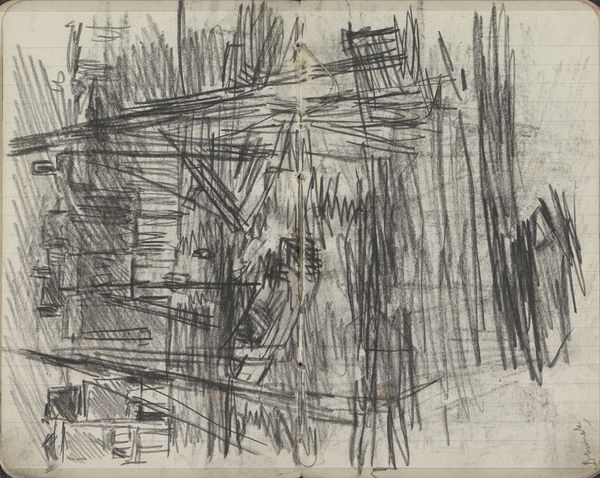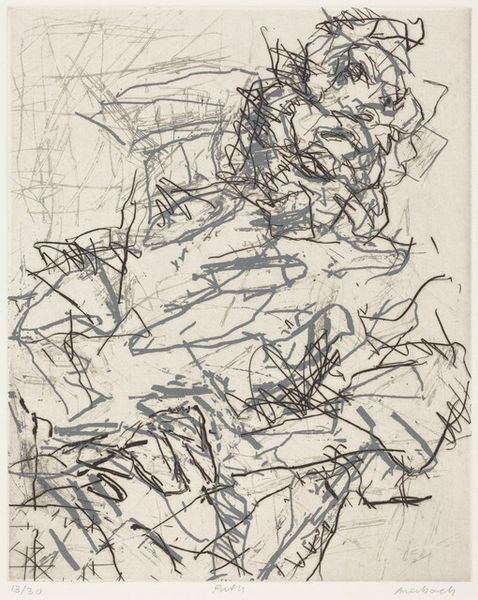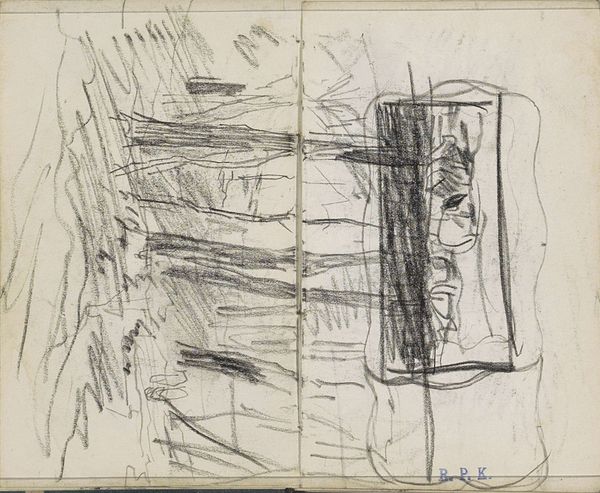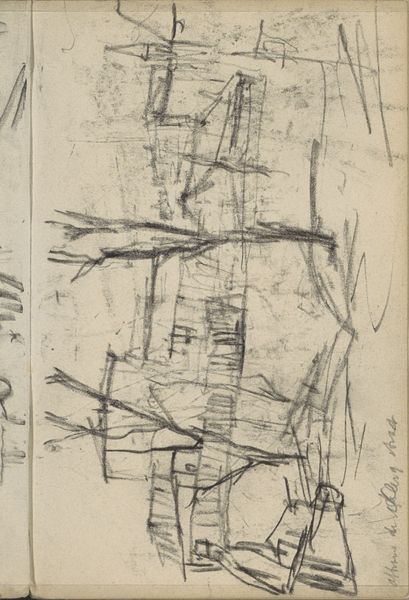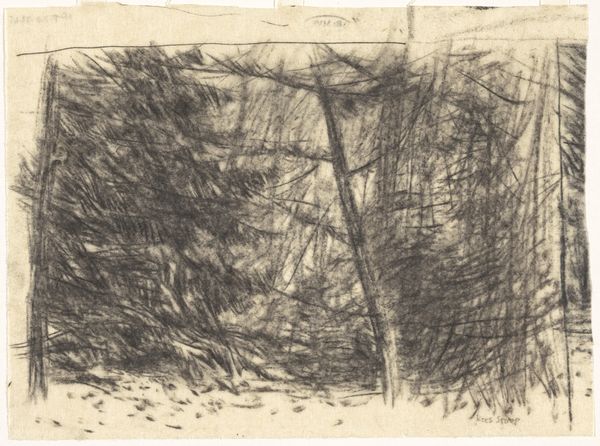
drawing, graphite
#
drawing
#
figuration
#
abstract
#
coloured pencil
#
graphite
#
modernism
Dimensions: 172 mm (height) x 117 mm (width) (bladmaal)
Editor: This is Karl Isakson’s "Kompositionsskitse med liggende figur", dating from somewhere between 1878 and 1922. It’s a drawing made with graphite and colored pencil. I find the overall impression kind of chaotic, a whirlwind of lines, but there's clearly a figure suggested in the lower right. What’s your take? How do you interpret this work within the artistic and social landscape of its time? Curator: It's a fascinating sketch. Looking at it historically, the late 19th and early 20th centuries were periods of tremendous upheaval in artistic representation. Isakson seems to be engaging with this shift away from traditional, academic art towards abstraction. The chaotic lines might reflect the fragmentation of lived experience under the pressures of rapid industrialization and social change. The question is, how does this work communicate beyond mere chaos? What statement does it make, if any, about society at the time? Editor: Well, the figure…it’s almost an afterthought, barely defined. Is that a commentary on the individual’s place in this chaotic new world? Like a marginalization? Curator: Precisely. Consider how the Salon system, which once dictated artistic success, was crumbling. Artists were grappling with new freedoms, but also new anxieties. Could this sketch be seen as a rejection of that established order, a deliberate embrace of the unfinished, the fragmented? Was this in direct reaction to any social movements? Editor: I suppose the lack of finish could be seen as a form of rebellion against the highly polished, academic style. So, in a way, the *process* of sketching, of exploration, becomes more important than the finished product? Curator: Exactly. And that shift has profound implications for how art is valued and displayed. How do museums legitimize sketches like these alongside more "finished" works? Does showcasing these preliminary pieces reveal a process once kept hidden, demystifying art making? It is, in itself, almost a democratization. Editor: That’s really interesting! I hadn’t considered the role of the museum in shaping our perception of even unfinished works like this. Thanks! Curator: And thank you! This discussion reminds us that every piece of art, even a sketch, is a product of, and a participant in, ongoing dialogues about art, society, and value.
Comments
No comments
Be the first to comment and join the conversation on the ultimate creative platform.
